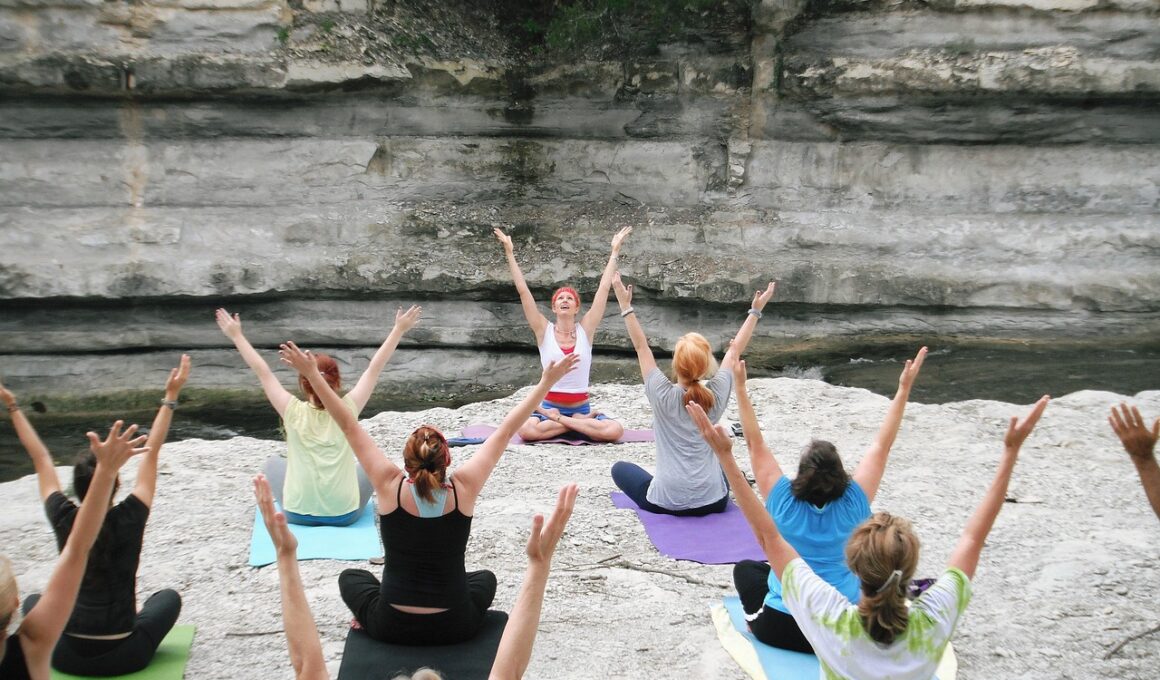Top Exercises for Posture Improvement and Pain Relief
Improving posture is paramount to maintaining overall health, especially in an age where most of us spend significant time sitting. Exercises targeting posture can lead to notable relief from pain, particularly in the back and neck regions. Specific activities help to strengthen postural muscles, thereby correcting common imbalances. Engaging in a regular routine will allow individuals to address the root causes of poor posture rather than just the symptoms. Activities such as yoga and pilates are excellent for developing the necessary strength and flexibility. Additionally, incorporating stretching routines can alleviate tightness in key muscle groups. Today’s article will provide effective exercises suited for every level of physical ability. By embracing these techniques, individuals can work toward achieving a balanced posture and improved well-being. Simple yet effective movements can make a significant difference over time. It’s important to remember that consistency is key to seeing results. Gradually increasing the intensity of each exercise will further enhance posture improvement rates. Each person may respond differently to the exercises, so it is important to find what works best for you.
Upper Body Strengthening Exercises
Strengthening the upper body is crucial for good posture, especially for those who often slouch. A series of targeted workouts can help to support the shoulders and upper back. Pull-ups, push-ups, and resistance band exercises are excellent options. Performing push-ups helps build the chest, shoulders, and triceps while also engaging the core, which plays a critical role in overall posture. For those new to strength training, modified push-ups on the knees can be beneficial. Resistance bands can offer versatile workouts for everyone, allowing for controlled movements. They provide a safe way to increase strength while promoting proper form. Incorporating exercises such as high rows and shoulder presses will engage the trapezius and deltoids, essential for shoulder stabilization. Additionally, exercises that target the upper back, like bent-over rows, can combat rounded shoulders. To maximize effectiveness, aim for at least two to three sets of 10 to 15 repetitions per exercise. Change the routine often to avoid boredom and to continue challenging the muscles. Remember to maintain alignment and focus on your form to reap the full benefits.
Core stability exercises play a significant role in posture improvement. Engaging your core muscles aids in maintaining good alignment and balance during daily activities. Exercises such as planks and bird-dogs effectively target the core while also incorporating elements of stabilization. Planks strengthen the entire core, including the abs, back, and shoulders. A strong core supports the spine, reducing the risk of injury from strain or poor posture. Bird-dogs, where you extend opposite limbs while on hands and knees, engage the core and improve coordination. This exercise is not just for strength; it also promotes balance and stability. Side planks are another variation that specifically targets the oblique muscles. These are important for both postural integrity and overall strength. To start seeing improvements, incorporate core exercises into your daily routine at least three times a week. As strength develops, increase the duration or number of repetitions for each exercise. Remember to breathe properly throughout each session. Ensuring you’re will increase effectiveness and prevent unnecessary strain. Always listen to your body; modifying exercises is the key to avoiding injury and achieving posture goals.
Lower Body Strength and Flexibility
The lower body significantly influences overall posture, so it’s essential to strengthen and stretch these muscles. Strong leg and hip muscles are vital for maintaining balance and spinal alignment. Squats and lunges are effective exercises for building strength in the legs and hips. When performed correctly, squats involve engaging the glutes, quadriceps, and hamstrings, contributing to better posture. Lunges further challenge balance and require core stability. However, flexibility should not be neglected; incorporating stretches for the hamstrings, quadriceps, and hip flexors is equally important. Tight muscles can pull the pelvis out of alignment, leading to discomfort and postural issues. Applying dynamic stretches such as leg swings or static stretches like the butterfly stretch can improve flexibility. For a well-rounded routine, aim to perform lower body exercises at least twice a week while adding flexibility movements on alternate days. Focus on your form with each exercise to prevent injury. Also, listen to your body to identify tight spots that need extra attention. Over time, an effective combination of strength and flexibility training will contribute immensely to better posture and pain relief.
Incorporating yoga into your weekly routine can significantly boost posture improvement efforts. Yoga emphasizes body awareness, flexibility, and strength, making it an ideal practice for enhancing posture. Poses such as the Mountain pose, Warrior II, and Cat-Cow are fantastic for aligning the spine and opening the chest. The Mountain pose teaches proper alignment by encouraging the lengthening of the spine. Warrior II enhances balance while strengthening the legs and promoting open hip joints. Cat-Cow stretches the spine, releases tension in the back, and provides insight into proper spinal movement. Each session should conclude with a restorative pose, like Child’s pose, to relax and integrate the benefits. Regular practice can lead to improved body mechanics and awareness in daily tasks. To gain substantial benefits, try to engage in yoga at least once or twice a week. Whether opting for classes or with guided online sessions, consistency is vital for improving posture. Explore different styles to find which resonates most with your body’s needs. Staying connected and mindful with your body through yoga fosters long-term benefits for posture and overall health.
Importance of Regular Stretching
Stretching is a crucial component of any effective posture improvement regimen. Incorporating routine stretches helps alleviate muscle tension, improves blood circulation, and enhances flexibility. Focus particularly on areas that accompany poor posture, such as the chest, shoulders, and hip flexors. Chest stretches, such as doorway stretches, create more space in the chest, allowing you to lengthen the upper body. Shoulder rolls not only relieve tightness in the shoulders but also promote awareness and relaxation. Integrating hip flexor stretches helps counteract the sedentary lifestyle many lead, which unfortunately leads to tightness and postural issues. A simple routine can be as short as 10 to 15 minutes daily. Gradually holding each stretch for 20 to 30 seconds can lead to significant flexibility improvements over time. Use gentle movements to avoid strain, focusing on relaxation rather than pushing limits. Stretching before and after workouts is beneficial for muscle recovery and maintaining flexibility. Remember that the goal is to regain mobility and enhance overall posture, rather than achieving extreme ranges of motion. Attuning yourself to your body’s needs, will enable progress and alleviate postural discomfort.
Tracking your progress is essential for maintaining an effective posture improvement regimen. Keeping a journal of exercises, stretches, and how you feel over time can motivate you to stay committed. Noticing your body’s response to various activities will provide insights into which exercises yield the best results for you. Maintaining proper posture requires ongoing awareness and consistent practice throughout daily life. Set realistic goals to achieve gradually, focusing on consistent small victories rather than drastic changes. Each week, take a few moments to assess improvements, adjusting your routine as needed. Consider integrating wearable technology or apps that track your physical activity patterns, encouraging accountability. Celebrate achievements, no matter how small, to remain motivated. Consider joining community fitness classes or workouts to connect with others on similar journeys. Peer support can foster accountability and inspire ongoing commitment to improving posture. Remember that maintaining good posture is an ongoing process that takes time and dedication. Above all, prioritize patience and self-care as you work on these wellness practices. Ultimately, the goal is to enjoy a life free from discomfort, allowing you to reach your full potential.

Having established a routine of exercises, maintaining focus on body mechanics is fundamental for lasting improvement. Analyze your daily habits and adjust where necessary to support your goals. Pay attention to how you sit, stand, and move through your day. Conditioning your body through targeted exercises will help reinforce the positive changes you’ve made. Dedicating time to reflection and assessment will keep you on track. Lastly, share your journey with others, fostering communal growth towards better posture and holistic health.


